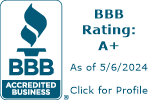By Chris Allen, CFP
The IRS generally raises the income phaseout limits and contribution limits according to cost-of-living adjustments. The Consumer Price Index (CPI), arguably the most common measure of inflation, was 7% for 2021, yet most changes made were 3%-5% and some contribution changes were $0. Why may that be?
The IRS typically only makes changes in increments of $500, so it may be several years before the cost-of-living-adjustments cumulates to that amount.
Let’s take a look at the changes for 2022:
Employer Retirement Accounts:
Elective Deferrals for 401k, 403b, and 457 accounts increased to $20,500 ($19,500 in 2021) while the catch-up is still at $6,500 for a total contribution of $27,000 for individuals 50 or older.
Maximum Includible Compensation was one of the largest increases in 2022. This simply means the amount of annual compensation that can receive a company match, which increased to $305,000 for 2022, a $15,000 increase from 2021. In other words, if a company matches 5% of contributions, then their 2022 match limit is $15,250 ($305,000 * 3%) whereas in 2021 they were only able to receive a match of $14,500 ($290,000 * 3%).
Defined Contribution limit increased to $61,000, nearly a 5% increase from 2021, which is the total combined contributions by employee and employer.
Defined Benefit limit had the largest percentage increase for 2022 at 6.5% rising from $230,000 to $245,000 for 2022. This is the maximum compensation that can be used toward calculating a pension benefit.
Simple IRA contributions received a minimal increase from $13,500 to $14,000 in 2022. However, the catch-up remains at $3,000.
Individual Retirement Accounts:
Roth IRA income phaseout increased roughly 3% with the new 2022 Adjusted Gross Income (AGI) phaseout of $204,000-$214,000 for Married Filing Jointly (MFJ). The AGI phaseout for single taxpayers is $129,000-$144,000.
The 2022 deductible IRA AGI phaseout amounts for active participants is as follows:
- Single – $68,000-$78,000
- Married Filing Jointly – $109,000-$129,000
- Married Filing Separately – $0-$10,000
- Non-active participant married to active participant – $204,000-$214,000 (same as Roth IRA MFJ)
Despite the IRA and Roth IRA income phaseouts changing, the contribution limit stayed at $6,000, plus $1,000 catch-up for those 50 years or older.
Ultimately, high income earners received the biggest benefit from the changes made for 2022 since $15,000 more of income can be matched, an additional $1,000 can be contributed as an elective deferral, plus up to $3,000 more allowed in total employer sponsored retirement plans.







